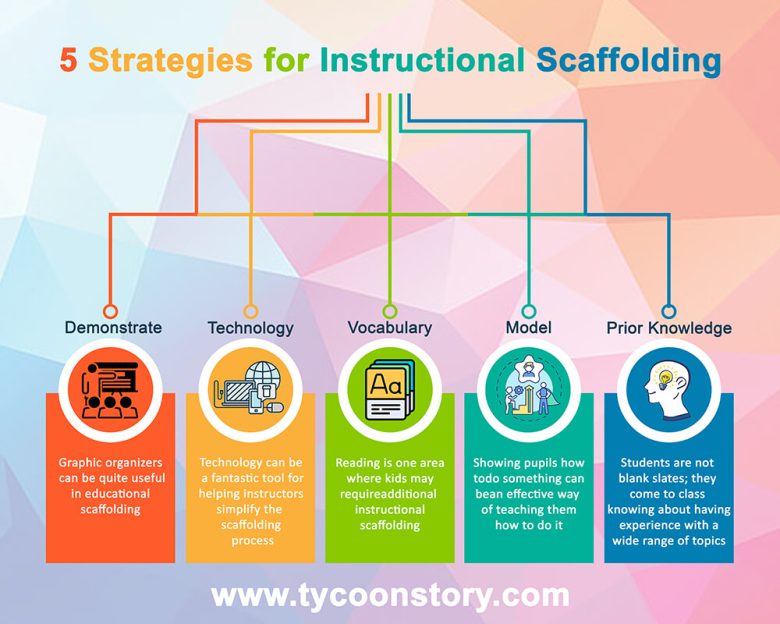Scaffolding is an effective educational method that helps pupils retain and apply new knowledge. Instructional scaffolding strategies are likely to be introduced to you as part of your education degree program. Some of these instructional scaffolding strategies are very enjoyable and engaging for pupils. Consider the following five examples:
1. Demonstrate Your Meaning
Graphic organizers can be quite useful in educational scaffolding. Using visual assistance, these tools assist students in organizing their thoughts on complicated or linked pieces of information. Graphic organizers can also be used to help students through a new process or job, as well as to transform abstract ideas into tangible methods of thinking.
You can utilize graphic organizers to promote learning in all three levels of the instructional scaffolding process: I do, we do, and you do. You should introduce the graphic organizer and explain how it will be used, what will be put in each part, and how it might enhance learning when presenting the material. The teacher then demonstrates how to complete the visual organizer.
2. Make Use of Technology
Technology can be a fantastic tool for helping instructors simplify the scaffolding process. You may create playlists of lecture videos for students to watch before the class lesson, allowing them to preview the topic and be prepared to engage with it in class. Teachers can also include connections to websites with various methods to interact with the material, such as movies, games, essays, or demos.
3. Share Essential Vocabulary
Reading is one area where kids may require additional instructional scaffolding. A teacher might offer key vocabulary terms or phrases that may pose difficulties before reaching a particularly complicated material.
The concept of categorizing language into tiers is frequent in vocabulary education. Tier-one words are ordinary terms that most pupils learn, such as baby or clock. These terms are normally not required to be included in the training. Tier-three terms, such as isthmus or parabola, are domain-specific; that is, they are often taught in a certain subject area and are often described inside a text.
4. Model
Showing pupils how to do something can be an effective way of teaching them how to do it. Try problem-solving with pupils by leading them through the stages of walking them through the process. You might also have certain pupils act as role models for their classmates.
Modeling can be utilized at any school level and subject. An elementary school instructor, for example, may demonstrate how to solve a division issue by grouping. To demonstrate how one number may be split into another, the instructor might create circles on the board and speak to students as they draw checkmarks in each circle.
5. Make Use of Prior Knowledge
Students are not blank slates; they come to class knowing about and having experience with a wide range of topics. Linking new learning to earlier life experiences helps pupils assimilate knowledge faster. When students can relate the new material to what they already know, it is easier for them to absorb and retain it.
Endnote
Most instructors’ use of scaffolding tactics in the classroom has become second nature. Part of this process is recognizing that children learn in a variety of ways. As a teacher, you aim to create practices that assist students in comprehending and interacting with new knowledge.
Many online curriculum packages are adaptive, which means they can analyze what a student already knows and what material they need next, allowing them to take a customized learning route toward reaching learning objectives. If your institution is struggling with low enrollment, you can incorporate these strategies to increase student enrollment.




